Hacker Tourism: Nike Missile Launching Area SF88LMatt Blaze
|
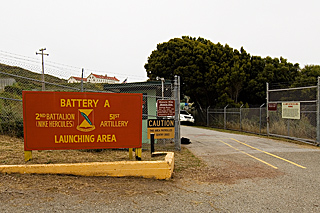
SF88L Main Gate. |
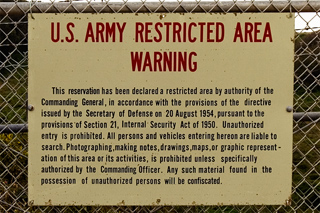
You can now ignore this sign. |
SF88L is now under the control of the National Park Service (so don't mess with them), and, thanks to a team of volunteers (many of whom are Nike veterans), is open for guided tours for a few hours each month (as of this writing, the first Sunday of the month, 12:30-3:30pm, but check the web sites below before heading out). See http://www.nikemissile.net/, http://www.nikemissile.org/, http://ed-thelen.org/, and http://www.atomictourist.com/nike.htm for details on the site and the history of the Nike program generally. Considering its proximity to San Francisco the area is surprisingly remote and rural. (To get there from the highway you go through a neat little single lane tunnel that alternates direction every five minutes.)
The site is a must-see for the Bay-area hacker tourist -- a visit richly repays the advance planning needed to accomodate its somewhat out-of-the-way location and limited schedule. It is remarkably well-preserved, with at least four full, JATO-equipped Nike missiles (un-fueled and sans warheads, we're repeatedly assured), two underground "magazines" with launch platforms, launch and radar control trailers, a radar station (originally a few miles away, line of site), and display cases with assorted artifacts.
The missiles moved on rails within the site and were stored in two underground bunkers ("magazines"), with an elevator to take them above ground for launching. One of the elevators/launch platforms has been restored and transports visitors into the magazine ("please keep one hand on the missile while the elevator is in motion").
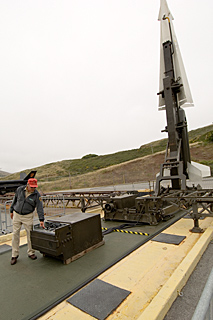
|
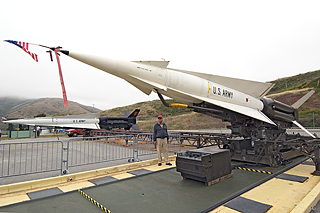
|
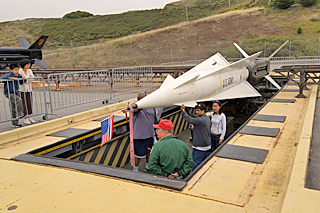
|
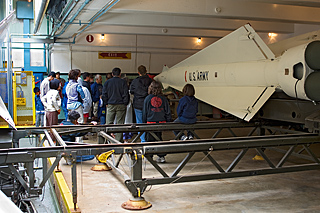
|
The docents are all volunteers, many of whom once worked at this or other missile bases (Nike veterans wear red hats). I was impressed by their knowledge and enthusiasm; everyone was eager to answer questions and tell their stories. The sites were operational around the clock, with frequent alerts and drills. Missiles were launched and guided manually from semi-portable modular "trailers"; the radar site was originally a few miles away, line-of-sight. Everything appears to have been designed to be packed up and moved on short notice.
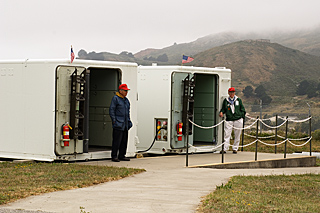
|
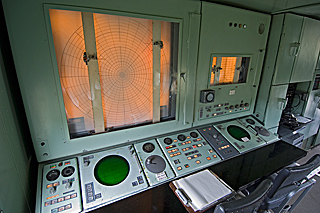
|
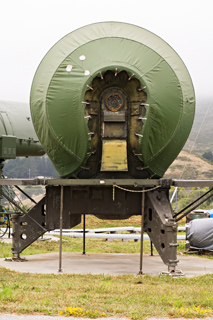
|
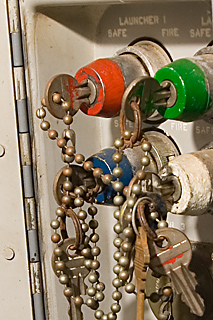
|
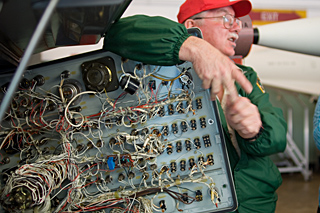
|
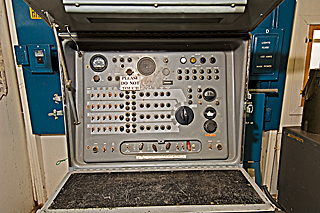
|
The guidance system was designed by Bell Labs (under a contract first negotiated just after World War II) and produced by Western Electric. Much of the hardware sports familiar Bell System logos and, if not for the classification markings and missile housing, could pass for some kind of central office telephone equipment.
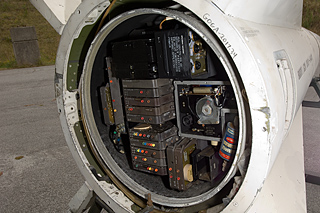
|
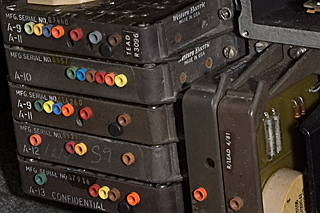
|
Domestic Nike bases were said to have nuclear warheads available that could be launched on the initiative of the local commander, presumably to allow a quick response to a surprise attack. A 1962 directive from President Kennedy ("NSAM-160") required most nuclear warheads to be equipped with "Permissive Action Links" ("PALs") (see Steve Bellovin's PAL page), which were first implemented as mechanical combination locks that covered the receptacles for the "arming plugs". In general, nuclear PAL codes are supposed to be released only on presidential authority. However, according to several of the Nike veterans I spoke with, both the arming plugs and the PAL codes were kept in dual-combination GSA safes at the launch sites themselves (these safes do not seriously resist destructive opening). Although everything was under two-person control, all equipment and information required to launch a warhead at any target within range was entirely within the base. This is consistent with the goal of responding quickly and autonomously to a sneak attack, but seems less than entirely comforting by modern sensibilities (and possibly not strictly consistent with Kennedy's NSAM-160 directive). The threat model apparently did not include the possibility of a relatively small, if well-trained (and well-armed), group that might have been able to take and maintain control of a Nike base for long enough to launch a warhead against the local city itself. (There were, however, other safeguards against rogue launches besides the PALs, both high- and low- tech. Barometric sensors attached to nuclear warheads somewhat limited the conditions where detonations could occur, while decidedly unfriendly sentry dogs greeted unauthorized visitors to critical "exclusion areas.")
The small scale of the operation is itself almost unsettling -- a reminder that this was not a unique place, but a rather tiny part of a massive distributed system made up of dozens of installations just like it. But it's easy to appreciate SF88L in more immediate, direct terms. I spent about three hours at the site, my attention consumed by the space-age-and-vacuum-tube gadgetry. The details are compelling enough, the accomplishments impressive enough, to allow one to forget for a moment the collective madness of the cold war that built it. Will the technological relics of our current fears one day have the capacity to fascinate us in such an uncomplicated way?
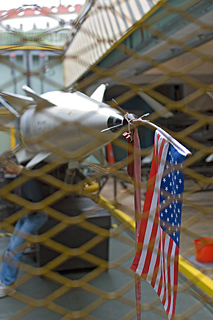
|
Entire contents copyright © by Matt Blaze. All rights reserved. You may not copy, modify or use these images for any commercial or non-commercial purpose without permission.
Main photo page here...
Snapshots here...
Home page here...